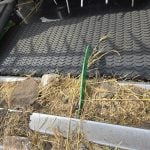LEVERKUSEN, Germany (Reuters) — Bayer Crop Science is casting its eye over potential targets to enhance its seeds operation as competitive threats increase with big mergers among its rivals.
The crop science operation comprises the world’s second-largest pesticides supplier but remains a much smaller player in seeds, where boss Liam Condon sees the greatest growth opportunities, particularly in wheat and soy seed markets.
“We always look at any opportunities that come up as long as they fit,” Condon said.
“There hasn’t been a success in wheat hybridization that has led to a significant increase in yield, but we see a great opportunity there.… In soy, we continue to see great opportunity in Latin America through bolt-on acquisitions.”
Read Also

China’s grain imports have slumped big-time
China purchased just over 20 million tonnes of wheat, corn, barley and sorghum last year, that is well below the 60 million tonnes purchased in 2021-22.
The crop science unit has strong market positions in rice, vegetable and canola seeds, but it is determined to meet the challenges presented by sector consolidation.
DuPont and Dow Chemical Co. agreed in December to combine their seeds and pesticides businesses to create a new industry giant, and ChemChina is planning to make an agreed takeover offer for Syngenta, the global leader in crop chemicals.
Condon signalled that Bayer may need faster growth in seeds than in crop chemicals to offer customers a more balanced package of products and services.
“If you have seeds, if you have crop protection and a supporting, decision-making platform with digital services, and you can prove to the farmer that you can increase yield with less resources, that’s a very compelling offer.”
A new precision farming industry has been emerging that provides services such as satellite-guided spraying and harvesting, often by the square yard, which enables farmers to make optimum use of their resources.
“For us, it’s about putting that compelling offer together as opposed to being overweight in crop or overweight in seeds. It’s a combination,” Condon said.














